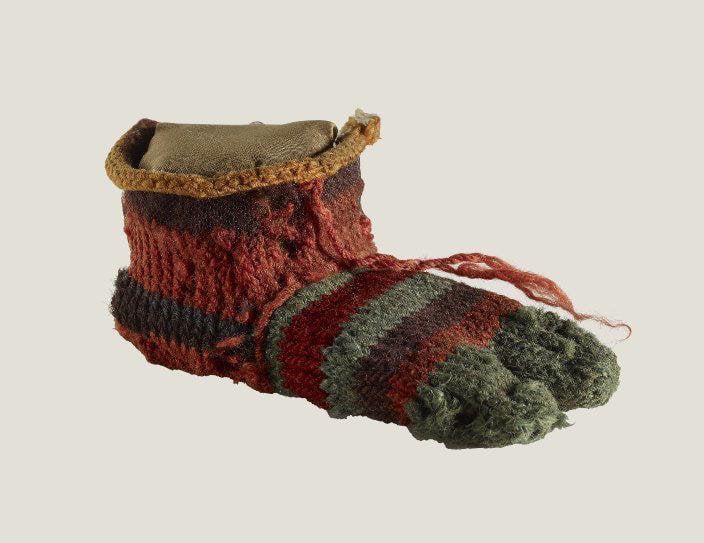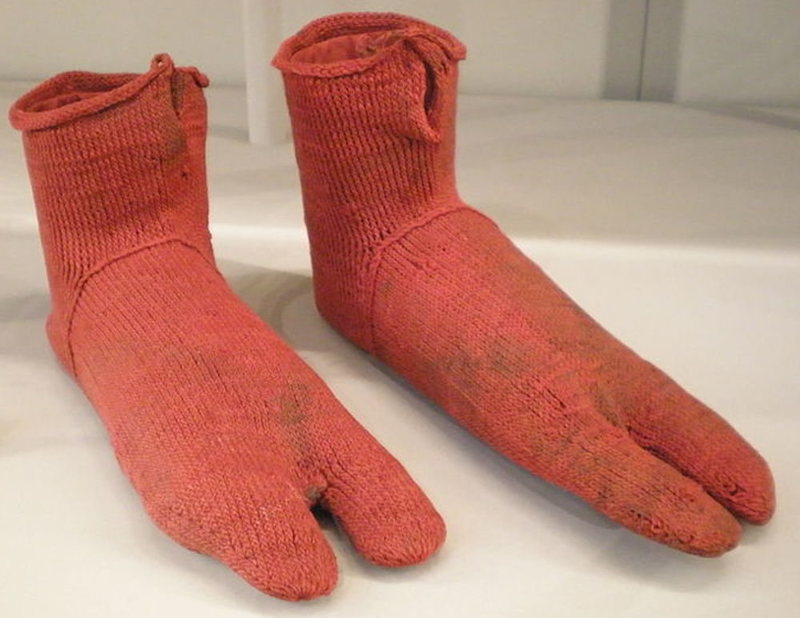
A Brief History Of The Humble Sock
Socks are items of clothing that we tend to take for granted. We just have socks – or so we think. Socks actually have a long and illustrious history. This article is a quick sock history primer for those that want to be in the know. While this article focuses largely on socks in the Western world, there are many non-Western cultures that also adopted and developed socks early on.
1. The Earliest Socks

The earliest socks were likely worn in the Stone Age. Far removed from the custom socks offered by mass producers today, Stone Age socks were likely created out of leather or animal furs. The Stone Age is widely regarded as the era in which human beings first developed the manufacture of complex clothing.
The development of clothing played a significant role in the development of humankind in the Stone Age. Before the invention of clothing, early humans relied on fur, leaves, and other natural materials to protect themselves from the elements. However, as they began to migrate to new climates and environments, they needed to adapt and develop new methods of protection. The development of clothing allowed early humans to better regulate their body temperature and protected them from the sun, wind, rain, and cold.
Clothing served as a means of expression and identity, allowing individuals to distinguish themselves from others and signal their status within a group. The invention of clothing was a key step in the evolution of humankind and allowed early humans to thrive and succeed in new environments. Socks have been identified as key items of clothing that allowed humans to migrate to colder climates.
2. Ancient Egypt
Relatively beautiful socks once warmed the feet of ancient Egyptians. The ancient Egyptians used a single-needle looping technique to create footwear. This would have taken a long time – which means that socks were likely seen as relatively luxurious items. Socks in ancient Egypt often had separate ‘pockets’ for the big toe and the smaller toes. This allowed them to be worn with thong-type sandals – which were the primary external footwear type during the entire ancient Egyptian imperial period.
3. Ancient Roman Udones

The socks and sandals look that so many modern people feel disgusted by was the norm all across the Roman Empire. The Roman Empire covered a huge amount of territory – with soldiers and traveling civilians alike having to brave all sorts of climates. Romans used a technique called nailbinding to make their ‘udones’. This created relatively thick sock-like items, which could be very comfortable depending upon the kind of wool or cloth that was used as the primary material.
While soldiers wore rough socks, wealthy people went in for luxury. Wealthy Romans had their socks decorated with intricate designs, such as stripes, checks, and embroidery. The practice of wearing socks was adopted from Greek culture and was so popular that even Emperors, such as Augustus and Tiberius, were depicted in statues and paintings wearing them.
Socks were also seen as a symbol of status, with the wealthy class wearing the most elaborate and expensive designs. The different colors and designs of socks were also used to signify a person’s rank, occupation, or religious beliefs. Roman socks were not only a practical item of clothing but also a significant aspect of Roman fashion and culture.
4. Europe In The Middle Ages
The Middle Ages are often wrongly categorized as being ‘dark’. This is a misconception that originated with the lack of information that early modern historians were able to gather about the era rather than a genuine description of the age.
The Catholic Church played a significant role in the development of socks in the Middle Ages. Monks would wear long, white socks as a symbol of purity and devotion, and these socks were often embroidered with religious symbols and motifs. Socks were also given as gifts to honor royalty and other members of the nobility, and the church often played a role in this process by commissioning skilled craftsmen to create these gifts.
Additionally, the church would often prescribe the types of socks that could be worn by members of the clergy, dictating their color, length, and design. This helped to establish socks as a symbol of religious devotion, and it also contributed to their popularity as a fashion item. The influence of the church on the development of socks in the Middle Ages is a testament to the role that religious institutions played in shaping fashion and clothing traditions during this period.
5. The Early Modern Period

The English reverend William Lee invented the knitting loom in the late 16th Century. This invention simplified the creation of socks at the dawn of the early modern period. In 1589, he was granted a patent for his invention, which he called the “stocking frame.” This machine was based on the principle of the frame loom and allowed for the mass production of socks and other knitwear items. Lee’s invention revolutionized the production of knitwear and made it possible to produce large quantities of socks, gloves, and other items in a short amount of time. Despite his success, Lee faced opposition from the knitters’ guild, who saw his invention as a threat to their livelihoods.
6. The Industrial Revolution
The industrial revolution ushered in a new age for clothing designers and manufacturers. The advent of efficient steam and water power enabled clothing manufacturers to automate the creation of socks in ways that had never been done before. The invention of the circular knitting frame in the 1800s enabled the mass production of socks to become truly dominant.
7. The Internet Age
In the hyperglobalized consumer economy of the internet age, many people have very little connection with the people that manufacture their socks. Socks are often made in huge sweatshops far from the consumer markets that they are intended for. During the last few years, there has been a move toward the adoption of more ethical sock-purchasing habits. People are once again interested in buying socks made in a way that can be accounted for.
